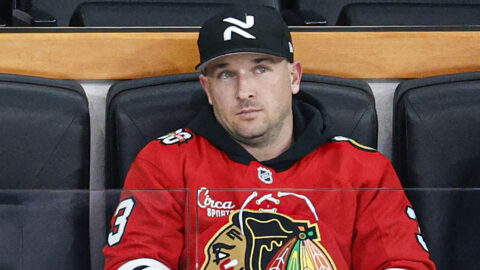Many of the circumstances surrounding former New England Patriot linebacker Junior Seau's death are confusing and surprising. Then again, many of them are not.
After a 20-year career of happiness found in NFL locker rooms across the country, Seau seemingly disappeared after his retirement. He faded into a darker place, where in 2010 he allegedly assaulted his girlfriend during an argument, was arrested for domestic assault and later that day drove his car off a cliff.
While he sustained only minor injuries from the crash and was not convicted on the charges, that day in 2010 seemed wholly uncharacteristic of the man who had shined so brightly as a linebacker at the University of Southern California and in the NFL. So what changed?
The answer to that question is simultaneously easy and difficult. It's easy because there is a clear correlation between Seau smashing his head into other men for 20 years and the mental afflictions Seau likely suffered from in the years leading up to his death. It's difficult because that means the NFL and America's most watched sport is a death trap for the men who play it.
As hard as that is to hear, it should come as no surprise. Even casual football fans have seen hits like this or this or this. So the fact that NFL players are getting their brains smashed in ought to be apparent to everyone at this point.
The NFL claims to have cracked down on head injures, including implementing better testing procedures and higher standards for returning to play. But even those measures seem to be falling short of protecting players, many of whom claim they would hide an injury in order to play.
How can the league protect its players (and the millions of athletes playing in colleges and high schools) if its players don't want protection? Worse yet, how can they protect them when the game they play is so inherently violent?
The short answer is that they can't — at least not without changing the game entirely and undermining the wildly successful image of toughness that the NFL thrives on.
Meanwhile, the league's problem is rapidly extending beyond the bounds of active players. As commissioner Roger Goodell and his team take cracks at the tough questions for the league's present and future, more and more questions are arising about the league's past.
Players like Seau, Ray Easterling (the former Falcons cornerback who killed himself April 19) and Dave Duerson (the former Bears safety who took his own life last year) have been out of the league for years, if not decades. And while the players of today continue to get mutilated on the gridiron, the retired combatants are tragically sitting in rotting shells of their once athletic bodies.
Addiction to painkillers, depression and early onset dementia are just some of the ailments that come with that decay. And the longer the NFL stands idly by, the worse the situation gets.
Thankfully, there are people working to change things. Currently, over 1,500 NFL retirees are part of more than 50 separate lawsuits against the NFL for personal injury and wrongful death claims, according to NFLConcussionLitigation.com.
Of course, litigation is a mind-numbingly slow process. Even if legal action is what finally shifts the tide in the battle for player safety, that shift won't come for some time.
Between that day and now, the burden falls to fans, reporters and the players themselves. Those groups are the ones who can demand that players are given the proper care both during and after their careers.
That burden is not an easy one to carry. But neither is the burden of knowing only a dark and deadly fate awaits after a selfless career of providing joy to millions of fans, earning millions of dollars for league executives and sacrificing the prime years of life to further the game of football.
Easterling carried that burden. So did Duerson. And now, it seems, Seau was carrying it as well.
The least we can do is carry ours and hope that, as more information pours in about these players and the toll football took on them, definitive answers are coming soon.
We can't say with certainty why Seau allegedly shot himself in the chest on Wednesday morning. It could have been any number of reasons. But it isn't hard to believe that the violence of football had something to do with it. After all, the bullet to his chest preserved the only thing that may those hold definitive answers regarding Seau's death: his brain.



